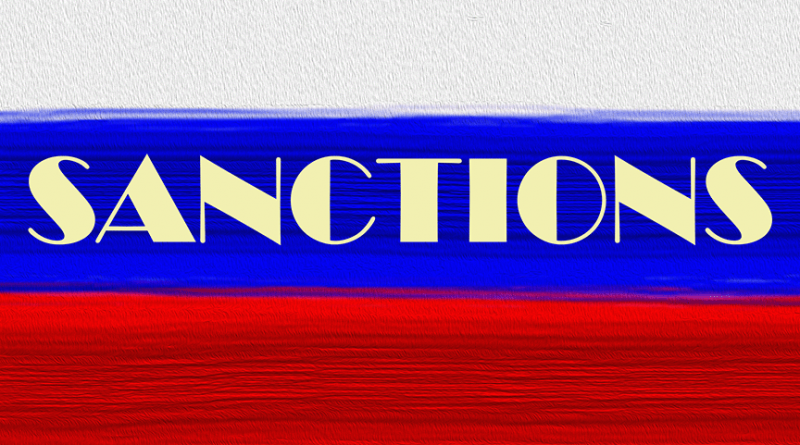The evolution of Russia sanctions in 2022
Nancy Fischer and Steven Farmer are Partners, and Iris Karaman is an Associate, at Pillsbury Winthrop Shaw Pittman LLP
On February 24, 2022, Russia’s entry into Ukraine set off an unprecedented wave of sanctions and export controls by a wide coalition of countries, including the United States, the United Kingdom, the European Union, Canada, Japan, South Korea, Australia, and New Zealand.
As the year progressed, these countries continued to coordinate and respond with increasingly severe sanctions and export controls, and each jurisdiction also imposed unique sanctions on targeted but not identical sets of Russian parties as well as products and services.
In designing and implementing these sanctions, Western governments have had to carefully tread between restricting strategic sectors of the Russian economy and crippling Russia’s military capability, whilst also ensuring the protection of domestic, international and humanitarian interests.
Over the course of the past year, key US, EU and UK sanctions levied against the Russian aviation, financial and energy sectors have varied somewhat as government strategies have evolved. As we move into the second year of the conflict, the impact – both direct and indirect – of these coordinated sanctions on Russia is being felt in Russia and in the global economy.
Aviation sector
Many of the first measures that the US, EU and UK adopted against Russia in 2022 related to aircraft and international air travel. As the conflict broke out, each jurisdiction quickly prevented Russian actors from entering their airspace.
For example, the EU and the UK each prohibited aircraft registered in Russia or owned, chartered, operated or otherwise controlled by Russian airlines or other Russian parties from overflying, landing in, or taking off from their territories from February 2022.
Commercial flights into Russia by non-Russian airlines are still generally permitted, however there are complications associated with ensuring such flights are conducted in compliance with applicable sanctions and other restrictions.
Immediately following the start of the conflict, the US, EU and UK each also imposed expansive export controls on items related to the aviation industry (including aircrafts and parts), in the form of requirements to obtain advance permission (licenses) prior to export to Russia.
These measures had a significant impact on the EU’s aircraft leasing industry, and the EU subsequently introduced a new basis for issuing a license allowing for the execution of aircraft financial leases concluded before February 26, 2022, when strictly necessary to ensure lease repayments to an EU party. With respect to the US, US sanctions assert jurisdiction over not only US-made aircraft and parts, but also non-US made aircraft and parts that contain certain levels of US-origin content.
The US, EU and UK also adopted restrictions on aviation-related services, including but not limited to maintenance, refuelling, repair and/or insurance and re-insurance. For example, the EU banned the provision of various aircraft-related services to any person in Russia or for use in Russia, namely overhaul, repair, inspection, replacement, modification or defect rectifications (with the exception of pre-flight inspection) in relation to aircraft and aircraft parts/technology.
Subsequent guidance clarified that ‘in-and-out’ operations (where an airline operates direct flights between a location outside of Russia and a location inside Russia) would not fall within the term ‘for use in Russia’ and services could therefore be provided to aircraft undertaking such flights.
In February and March 2022 respectively, the EU and UK also adopted restrictions on the provision of insurance and reinsurance relating to aircraft or other aviation and space items to Russia or Russian parties.
Whether the sanctions will ultimately achieve their goal of curtailing Russia’s aggression in Ukraine remains to be seen, but the sanctions appear to have had some impact on Russia’s economy
Financial sector
As an initial response to the conflict, the US, EU and UK each imposed sanctions through asset freezes against key Russian and Belarusian financial institutions.
In the US, these measures were imposed by designation on the Specially Designated Nationals and Blocked Persons (SDN) List of the Treasury Department’s Office of Foreign Assets Control (OFAC). US persons are prohibited from entering into any transaction with SDNs, or with entities that are owned 50% or more by one or more SDNs.
Similarly, the EU and the UK added Russian and later Belarusian financial institutions to their consolidated lists of financial sanctions targets, and asset freeze measures extend to entities directly or indirectly more than 50% owned or controlled by listed financial institutions.
In a further effort to cut Russia’s financial sector off from wider markets, the US, EU, and UK banned certain Russian banks from the Belgian-based Society for Worldwide Interbank Financial Telecommunication (SWIFT), which serves as the primary messaging network for international payments.
Practically speaking, these measures effectively prevent sanctioned Russian financial institutions from transacting in major currencies and engaging in transactions and transfers in Western–and, to some extent, Asian–markets.
In addition, in late February of 2022, the US adopted a prohibition on all transactions with the Central Bank of Russia (CBR), whilst the EU and UK prohibited supplying financial services to the CBR for the purpose of foreign exchange reserve and asset management.
Russia holds a significant share of its foreign currency reserves in other countries including the US, EU and UK, and so these measures had the effect of making it more difficult for the CBR to access much of its foreign reserves.
In addition, western countries also adopted measures aimed at prohibiting individual transactions rather than cutting off entire financial institutions. For example, the EU adopted restrictions preventing the acceptance of deposits from Russian companies (or Russian owned non-EU companies) and Russian nationals/residents where such deposits would bring the account holder’s balance above €100,000 per financial institution (across all accounts).
As the conflict progressed, the US, UK and EU sought to restrict how their own citizens may provide financial services to Russian entities. In early 2022, the EU and UK banned certain financial services to Russia, including for example the provision of credit rating services and central securities depository services.
As the year progressed, further prohibitions to inhibit the Russian financial sector were introduced. In May 2022, the US prohibited the export of certain services to the Russian Federation, including accounting, trust and corporate formation, and management consulting services.
Later in the year, the EU and UK followed suit and prohibited the provision of trust, accounting, business, and management consulting services to Russian companies (there is also an EU prohibition on legal services).
Energy sector
As Russia’s largest industry, the Russian energy sector has been a focus of US, EU and UK sanctions. These sanctions impact not only trade in Russian oil and gas, but also new equity and debt and investment in energy projects, exports to Russia of equipment and parts used in energy production, as well as designations of specific companies and individuals in the sector.
In designing and implementing these sanctions, Western governments have had to carefully thread between restricting the Russian energy sector and ensuring the satisfaction of domestic energy needs.
Early on in 2022, the UK, EU and US took steps to restrict the import of Russian energy products. However, due to varying Russian energy needs and dependencies among countries, the implementation of the import bans varied.
The US was the first to ban the import to the US of Russian crude oil, petroleum, liquefied natural gas and coal, on 8 March 2022. The EU followed suit with a ban on the import of Russian coal on 8 April 2022 and Russian crude oil and petroleum products on 3 June 2022.
Notably, the EU oil import ban was subject to country-specific derogations for certain EU member states particularly reliant on Russian oil and there was a general exception for most crude oil imports effective until 5 December 2022 and petroleum imports effective until 5 February 2023.
On 21 July 2022, the UK introduced prohibitions on the import of Russian coal and crude oil and petroleum products, which entered into force later in the year (10 August and 5 December 2022 respectively). Furthermore, on 28 October 2022, the UK introduced a ban on the import of liquified natural gas effective from 1 January 2023.
In addition to restricting the supply for Russian energy imports, the UK, EU and US each imposed additional export restrictions on equipment and parts used in energy production (such as products used for deepwater oil and gas exploration, extraction and oil refining), with the aim of curbing Russia’s long-term ability to pursue oil and gas exploration and other energy projects. These followed measures originally introduced in 2014, following Russia’s annexation of Crimea.
The UK, EU and the US have also each adopted measures aimed at hindering foreign investment and access to finance for Russian energy projects.
Most recently, the tension between the multilateral goals of prohibiting Russia from profiting from historically high prices of oil and gas and easing the international energy crisis contributed to the implementation of a coordinated price cap on Russian-origin oil and petroleum products traded between third countries.
Looking ahead
As time progresses, further sanctions targeting the Russian aviation, financial, energy and other sectors are likely. In addition, thwarting sanctions evasion and enforcement of the existing regimes is a priority for 2023 with agencies like the US Department of Justice focused on prosecuting sanctions evaders and the UK’s Office of Financial Sanctions Implementation looking to use new powers to issue monetary penalties for sanctions violations on a strict liability basis to enforce Russia sanctions robustly.
Whether the sanctions will ultimately achieve their goal of curtailing Russia’s aggression in Ukraine remains to be seen, but the sanctions appear to have had some impact on Russia’s economy. Data suggests that the Russian economy suffered in 2022 (it is estimated that Russia’s GDP dropped by between 2.2%-3.9%). Looking ahead, their long-term impact will likely depend on various factors, including the market appetite of non-aligned jurisdictions, such as China and India, to engage in trade with Russia.




